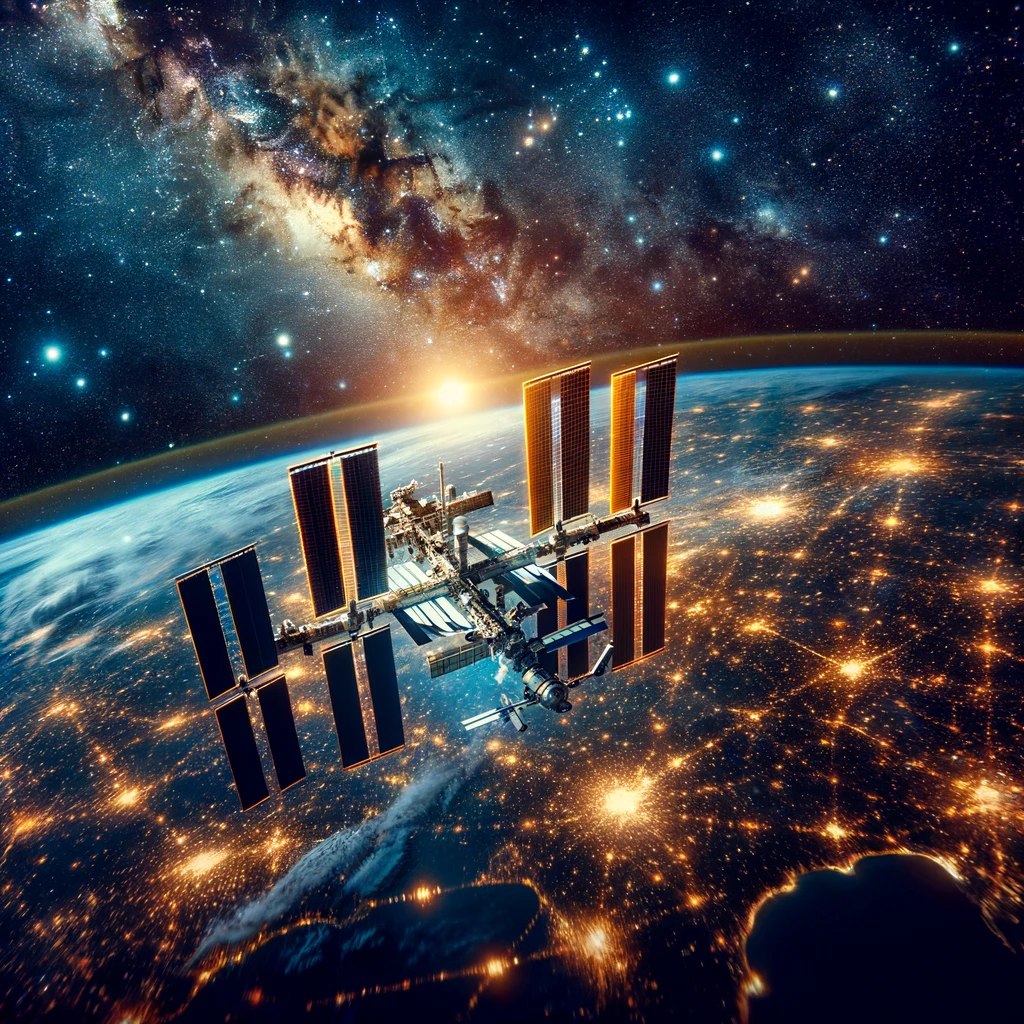· deep dive · 4 min read
Track the International Space Station
A look at how tracking the space station offers a unique view of space exploration.

As dusk settles in, one might catch an unusual bright light coasting smoothly and swiftly among the stars. This spectacular sight is the International Space Station (ISS) orbiting Earth as it hosts a state-of-the-art microgravity laboratory 250 miles above us. Tracking the ISS has become an intriguing activity that provides a portal into the remarkable world of space stations and the pivotal research conducted on them daily.
A High-Tech Orbital Lab
The ISS stands as one of humanity’s crowning achievements in space, an engineering marvel costing over $150 billion that took 10 years and over 40 missions to assemble. This football-field-sized structure houses cutting-edge facilities equipped to perform impactful experiments across scientific fields from botany to physics.
Due to its specialized zero and microgravity environment, research on the ISS has led to advances in areas such as vaccine development, combustion science, and materials science at an accelerated rate compared to Earth-based labs. The station also serves as a testbed for demonstrating technologies needed for deep space missions, keeping it at the forefront of space technology innovation.
Furthermore, the ISS provides researchers an unrivaled vantage point 252 miles above Earth to conduct Earth and space science studies, including monitoring climate change, tracking severe storms, and exploring the mysteries of dark matter.
An Orbiting Symbol of Global Cooperation
While the scientific output of the ISS is substantial, its legacy extends far beyond research results and space-aged hardware. The mere existence and continued operation of the ISS serves as an inspirational demonstration of what nations can achieve through cooperation rather than conflict.
Currently, five space agencies representing 15 countries contributed financial and technical resources toward the ISS’s development and ongoing missions. The Space Station is jointly operated by:
- NASA (United States)
- Roscosmos (Russia)
- JAXA (Japan)
- ESA (Europe)
- CSA (Canada)
It stands as the most significant peace-time collaboration in space to date. This partnership underscores the global commitment to space exploration and scientific advancement. Astronauts from various partner nations live and work together aboard the ISS for months at a time, learning to communicate across languages and cultures to effectively coordinate science activities and station maintenance.
This partnership has survived economic recessions, changes in political leadership and public opinion. Nearly three decades on, the international effort continues to thrive, having become the world’s largest cooperative program in science and technology.
Such global coordination in space exploration builds connections between people worldwide and motivates younger generations to pursue careers in STEM fields. Ultimately, the legacy of peaceful collaboration represented by the International Space Station may prove more enduring than any single research breakthrough.
Spotting the ISS from Earth
Of course, beyond its scientific and cultural impact, many are drawn to the ISS by the prospect of actually seeing it orbit Earth against the night sky. Spotting the space station is an accessible astronomy experience open to anyone willing to patiently scan the heavens.
The ISS completes an orbit every 90 minutes, presenting opportunities in the late evening or early morning to view it gliding by overhead. To know when and where to look, one can access online services that provide real-time tracking data based on current orbital projections. Then it’s just a matter of getting away from light pollution and orienting yourself to have the best vantage point. Services like KeepTrack.Space even offer a 3D simulation of the station for enhanced viewing.
On spotting the ISS, it will appear as a bright dot steadily moving across the stars rather than the typical blinking of a passing airplane. One can also distinguish the solar panel configuration. With some luck and preparation, you too can gaze up and watch as the ISS passes silently over your location at 17,000 mph, contemplating life aboard a waypoint for human exploration far beyond our atmosphere.
Future
Ultimately, the International Space Station represents the shared human aspiration to push boundaries and expand knowledge of environments beyond our home planet. It serves as an example of how space exploration may shape a peaceful future as it draws people together in pursuit of discovery.
Tracking the ISS lets us connect more tangibly with this remarkable achievement in orbit and the scientific work happening daily for the benefit of those on Earth. So next time you spot its luminous streak crossing the twilight sky, consider all that it represents and how it expands our awareness to space research and cooperative progress.




